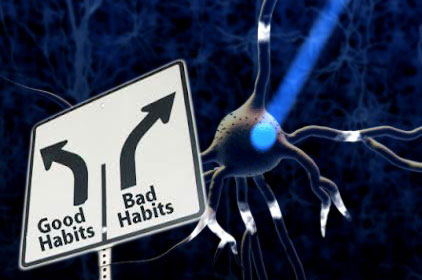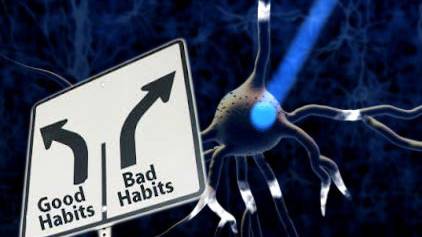Breaking habits with a flash of light
Source: blogs.discovermagazine.com

In a lab at MIT, a rat enters a T-shaped maze, hears a tone, and runs down the left arm towards a piece of chocolate. It’s a habit. The rat has done the same thing over so many days that once it hears the tone, it’ll run in the same direction even if there’s no chocolate to be found. Humans are driven by similar habits. Every morning, I hear my alarm go off, put some clothes on, and shamble into the kitchen to brew some coffee.
Habits, by their very nature, seem permanent, stable, automatic. But they are not, and the MIT rat tells us why. Earlier, Kyle Smith had added a light-sensitive protein to one small part of its brain – the infralimbic cortex (ILC). This addition allows Smith to silence the neurons in this one area with a flash of yellow light, delivered to the rat’s brain via an optic fibre. The light flashes for just three seconds, and the habit disappears. The rat hears the tone, but no longer heads down the chocolate arm.
The experiment shows that even though habits seem automatic, they still depend on ongoing supervision from the ILC and possibly other parts of the brain. They’re ingrained and durable, but subject to second-by-second control. And they can be disrupted in surprisingly quick and simple ways.
“We were all stunned by how immediate and on-line these effects really are,” says Smith. “Changing the activity of this small cortex area could profoundly change how habitual behaviour was, in a matter of seconds.”
By cutting out bits of a rodent’s brain, or inactivating them with chemicals, other scientists had already identified parts of the brain, including the ILC, that are important for habits. But these are somewhat clumsy methods. Smith’s team wanted some more refined, something that could inactivate the ILC on demand for short bursts of time.
They turned to optogenetics. This revolutionary technique takes light-sensitive proteins from around the tree of life, and uses viruses to introduce them into an animal’s neurons. By choosing the right protein, and targeting the right part of the brain, scientists can now excite or silence a chosen group of neurons with astounding precision, using little more than flashes of coloured light.
Working with supervisor Ann Graybiel and optogenetics founder Karl Deisseroth, Smith filled his rats’ ILCs with halorhodopsin – a protein that comes from salt-loving microbes, and silences neurons when hit by yellow light.
Smith then trained rats to run down one arm of his T-shaped maze towards some chocolate, or down the other towards a sugary drink. One tone set them off, and a second one told them which arm to run down. After days of practice, the habits became ingrained. Even when Smith started “devaluing” one of the rewards by lacing it with a nauseating chemical, the rat would still run towards it the next time it was tested, even if it didn’t drink. That’s a habit – a behavioural reflex. The tone sets off a chain of actions, regardless of what the rat gets out of them.
[...]
Read the full article at: discovermagazine.com
Optogenetics (2010)






















